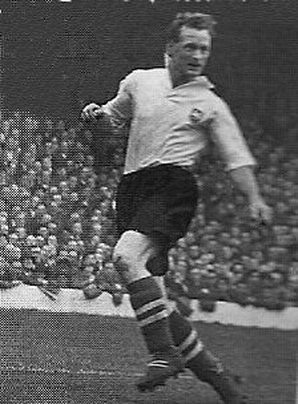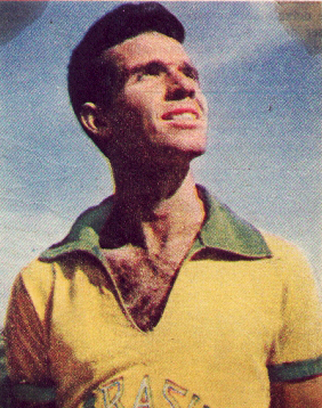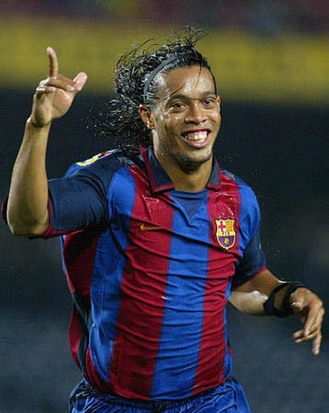|
|
|
The 30 Greatest Left Wingers (or Left Forwards / Wide Midfielders) of All Time
Shirt number: 11
The role of the winger, or wide midfielder, has changed considerably over the years. Originally the job was well-defined, and crucial to the team's creativity: stay close to the touchline, dribble past the full-back and float in a cross for the centre-forward (as exemplified by Sir Stanley Matthews). The greatest wingers have always scored a healthy amount of goals too, sometimes a staggering amount given their position. The heyday of the traditional winger lasted until the 1960s. After that Alf Ramsey's 4-4-2 and the Italian catenaccio defence changed everything. The winger was either removed all together - leaving the midfield narrow and relying on full-backs for width; or they were replaced with 'wide midfielders' - players who had to tuck in and help in midfield as well as getting forward and wide with the ball when in possession, often using pace and one-to-ones rather than dribbling to get past players, and putting crosses in when they had chance (for example this was the style of David Beckham). The 4-3-3 system, popular in the 1970s, had either only one winger in a lop-sided formation (i.e. Garrincha for Brazil in 1962 or Overmars for Arsenal in 1996/97) or two wingers who also had to take it in turns to come inside to support a lone striker when the opposite winger stayed wide. Now, with the modern variation of 4-3-3 the winger also has to drop back when needed to help the midfield (as used by Mourinho's Chelsea). Coaches will often choose to play a great goalscoring winger as a central striker in order to maximise their contribution, although this is not their natural position and can sometimes restrict their game (a case in point with Cristiano Ronaldo).
With the newly popular 4-2-3-1 though the traditional winger is making something of a return. Able to stay forward, these players are definitely forwards rather than midfielders and are often not required to track back (for example Ronaldinho, Neymar or Ronaldo). However, these new wingers are now more likely to cut inside and make runs into the box rather than hugging the touchline to put crosses in; the crossing job is often left for the full-back, leaving the new 'winger' to get in the box and score. These new wingers are often played on their 'wrong' sides (i.e. right footed players on the left and vice versa) to reflect this new role (i.e. as in 2009/10 by Mancini at Manchester City or van Gaal at Bayern Munich with Robben and Ribery). These new types of players (we are have classified them as 'Wingers' here but many call them strikers, e.g. Ronaldo) are becoming important again in the game and scoring many goals themselves in addition to setting up chances for others, and this can be seen by the goal tallies of players like Cristiano Ronaldo and Lionel Messi (who began as a right winger before being moved to a more central position). Throughout all these changes wingers have been probably the most exciting players on the pitch, doing what they do best: moving the ball at pace and using their skill to dribble past opponents and creating goal-scoring chances.
As fewer players are left-footed, great left-wingers are harder to find and are consequently highly prized. Some right-footed wingers are versatile and can thrive in this position (e.g. Tom Finney for England). This tendency is becoming increasingly common given the tendency of wingers to cut inside. The 'left wingers' here also include right footed players that typically start on the left and cut inside.

Tom Finney
Alan Morton Sco 1910s/20s
Orsi Arg/Ita 1924-34
Schall Aus 1930s
Cliff Bastin Eng 1930s/40s
Enrique Garcia Arg 1937-41
Loustau Arg 1940s
Karl Aage Praest Den 1940s
Finney Eng 1950-58
Czibor Hun 1950s
Skoglund Swe 1950s
Orsi Arg/Ita 1924-34
Schall Aus 1930s
Cliff Bastin Eng 1930s/40s
Enrique Garcia Arg 1937-41
Loustau Arg 1940s
Karl Aage Praest Den 1940s
Finney Eng 1950-58
Czibor Hun 1950s
Skoglund Swe 1950s

Zagallo
Branko Zebec Yugo (Cro) 1958-62
Cliff Jones Wal 1950s
Leonel Sanchez Chile 1953-73
Hans Schafer Ger 1954-58
Gento Spa 1955-66
Zagallo Bra 1958-66
Pepe Bra 1950s/60s
Dzajic Yugo 1960s
Moulijn Neths1960s/70s
Rensenbrink Neths1970s
Cliff Jones Wal 1950s
Leonel Sanchez Chile 1953-73
Hans Schafer Ger 1954-58
Gento Spa 1955-66
Zagallo Bra 1958-66
Pepe Bra 1950s/60s
Dzajic Yugo 1960s
Moulijn Neths1960s/70s
Rensenbrink Neths1970s
|
|
To explore, use the tabs on the header or click on the links below:
Alltime Legends Best Players in Each Position Best Ever National Teams Best Ever Club Teams Dream Teams Visit our Shop |

